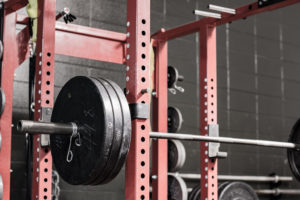For years, conventional wisdom has held that endurance athletes, such as distance runners (greater than 800m), cyclists, triathletes, etc. should perform their weight training in a manner that will (theoretically) improve their endurance, if they lift weights at all. This means rep ranges of 15-20+ and relatively light loads. This is an antiquated, approach and I’ll show you why.
In the past, endurance training and strength training have been seen as working against each other. While endurance training will inhibit strength and power gains, strength training can improve strength and power output in endurance athletes without inhibiting endurance adaptations. Hickson et al, found that in moderately trained runners and cyclists, training for strength using loads >80% 1RM, and endurance concurrently for 10 weeks, improved maximal leg strength on average by 30%. These athletes also showed 13% improvements in treadmill running to exhaustion at maximal work rate (4-8 minutes), 11% improvements in ergometer cycling to exhaustion at maximal work rate, and 20% improvements in cycling to exhaustion at 80% effort.
If you’re saying to yourself, “Yeah, but they’re not elite athletes, so whatever they do will yield improvement.” Well, hang on because another study by Aagaard et al, used highly trained national team cyclists. This study used mostly 5-6RM loads for 16 weeks along with endurance training. The strength and endurance group improved mean power output in five minutes of all out cycling by 3-4%, and mean power output during a 45 minute time trial by 8%, while the endurance-only group did not.
Another important factor related specifically to running, is running economy. It’s an important factor in achieving faster times and is improved by gaining strength. Improved running economy basically means you are able to:
- Run more efficiently
- Run at a faster pace for the same distance
- Keep the same pace for a longer distance.
This happens because your body becomes more efficient at using energy and requires less oxygen. A study done at the University of New Hampshire found that a 10-week weight training program improved running economy by up to 4% in female runners who had been running 20-30 miles per week for at least a year (Johnston, Quinn, Kertzer, Vroman, 1995).
Another benefit of strength is a reduced susceptibility to injuries. Improving your running performance requires a ton of practice, and with this heavy practice load comes injury risk. Without being healthy enough to run, performance improvements will stall. During running, there are significant ground reaction forces (GRF), which are necessary to keep you moving, however, this force on your muscles and tendons requires eccentric (muscle lengthening) strength to accept this force and resist injury. Greater peak GRF are associated with faster running speeds, and thus greater injury risk. Regardless of what distance you’re running there is a sprint component to pretty much every race, because there’s always a final dash to the finish line. So, all runners need to be strong to prepare themselves for this.
I’m not saying all endurance athletes need to be able to squat 400 lbs., but I am saying that research supports a performance boost from improved strength.
If you’re a runner or endurance athlete looking for some help with your strength program, shoot me an email and let’s get you on track!
References
Photo:
“Loaded bar in rack” by Lance Goyke CC BY 2.0
“Home Meet” by Roman Boed CC BY 2.0
Aagaard P, Andersen JL. Effects of strength training on endurance capacity in top-level endurance athletes. Scand J Med Sci Sports 20(Suppl 2): 39–47, 2010.
Aagaard P, Andersen JL, Bennekou M, Larsson B, Olesen JL, Crameri R, Magnusson SP, Kjaer M. Effects of resistance training on endurance capacity and muscle fiber composition in young top-level cyclists. Scand J Med Sci Sports 21: 298–307, 2011.
Hickson RC. Interference of strength development by simultaneously training for strength and endurance. Eur J Appl Physiol Occup Physiol 45: 255–263, 1980.
Hickson RC, Dvorak BA, Gorostiaga EM, Kurowski TT, Foster C. Potential for strength and endurance training to amplify endurance performance. J Appl Physiol (1985) 65: 2285–9220, 1988.
Johnston RE, Quinn TJ, Kertzer R, Vroman NB. Improving Running Economy Through Strength Training. Journal of Strength and Conditioning (1995).


